THE NATURE
YAKUSUGI – ANCIENT TREES
Guardians of the forest
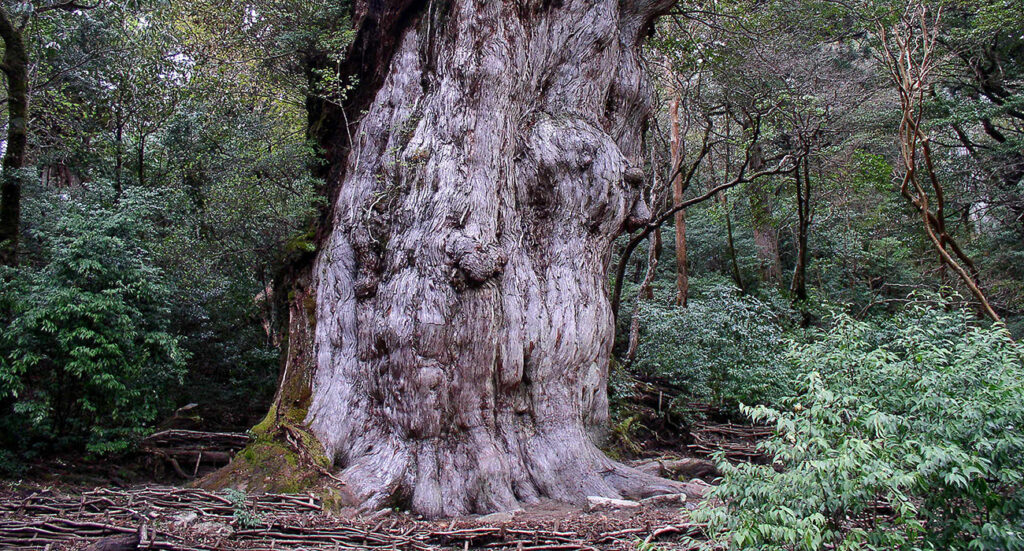
About “Yakusugi”
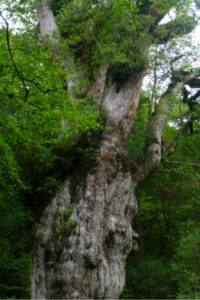 Yakusugi is the name given to the ancient Japanese cryptomeria trees that still grow on Yakushima. They can be found growing from an altitude of 600m above sea level to the tree line at 1,400m. Sugi trees (cryptomeria) are found across the whole of Japan. A mainland sugi has a life span of approximately 500 years (there are older sugi of around 1,500 years in Niigata Prefecture). Sugi are often referred to as Japanese cedar, but it may be better to refer to these trees as sugi as they do differ from cedar trees (cedrus).
Yakusugi is the name given to the ancient Japanese cryptomeria trees that still grow on Yakushima. They can be found growing from an altitude of 600m above sea level to the tree line at 1,400m. Sugi trees (cryptomeria) are found across the whole of Japan. A mainland sugi has a life span of approximately 500 years (there are older sugi of around 1,500 years in Niigata Prefecture). Sugi are often referred to as Japanese cedar, but it may be better to refer to these trees as sugi as they do differ from cedar trees (cedrus).
What makes yakusugi special is their life expectancy. The title of ‘yakusugi’ is generally given to trees over 1,000 years old, but some sugi can be classified as yakusugi before they reach this age. Possibly the oldest of these yakusugi is Jomon sugi, with an age estimated between 2200 – 7200 years old. The likelihood is that Jomon sugi is around 4,000 – 4,500 years old (but this our non-academic guess).
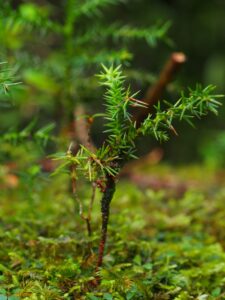 The reason for the longevity of the yakusugi trees is due to the harsh conditions in which they exist. High rainfall and low soil nutrition have forced the trees to grow incredibly slowly and by doing so they build up high amounts of resin. The resin protects the tree from disease and decay, so that even the stumps of trees felled hundreds of years ago (known as ‘domaiboku’) can still be seen in the forests today.
The reason for the longevity of the yakusugi trees is due to the harsh conditions in which they exist. High rainfall and low soil nutrition have forced the trees to grow incredibly slowly and by doing so they build up high amounts of resin. The resin protects the tree from disease and decay, so that even the stumps of trees felled hundreds of years ago (known as ‘domaiboku’) can still be seen in the forests today.
Due to its high resin content the yakusugi timber was highly prized as a lightweight, waterproof roofing material during the Edo era. From the Edo era (1600 – 1868) until the 1970’s many sugi trees (along with cypress trees) were cut down for their waterproof qualities. Luckily, the trees that didn’t grow straight or tall were left standing. This is why there are still around 30 ‘named’ yakusugi trees growing in the forests around Yakusugi Land and Shiratani Unsuikyo, and possibly many more in the vast forests of Yakushima.
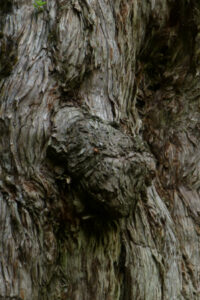 Sugi forests need sunlight to germinate and grow, so many are created after landslides or from a clearing where a tree has fallen. In the forests of Yakushima it is common to see younger sugi growing on the body or stump of a fallen ancestor. The yaku sugi make a great breeding ground for a wide variety of epiphytes – plants that grow on the main tree. Jomon Sugi is home to 23 varieties of epiphytes (on the last count), including several species of rhodedendron.
Sugi forests need sunlight to germinate and grow, so many are created after landslides or from a clearing where a tree has fallen. In the forests of Yakushima it is common to see younger sugi growing on the body or stump of a fallen ancestor. The yaku sugi make a great breeding ground for a wide variety of epiphytes – plants that grow on the main tree. Jomon Sugi is home to 23 varieties of epiphytes (on the last count), including several species of rhodedendron.
Skeleton trees
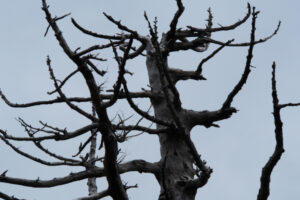 Towards the upper tree line, the mysterious skeleton trees can be seen with their battle-scarred, bleached white trunks and mutilated branches. They stand out against the green mountainside. Although their bark has been stripped by long exposure to typhoons and high winds, these trees are actually still alive. Look carefully and you may still see signs of green life. Weathering is the main cause for these trees to lose their bark.
Towards the upper tree line, the mysterious skeleton trees can be seen with their battle-scarred, bleached white trunks and mutilated branches. They stand out against the green mountainside. Although their bark has been stripped by long exposure to typhoons and high winds, these trees are actually still alive. Look carefully and you may still see signs of green life. Weathering is the main cause for these trees to lose their bark.
If you wish to learn a lot more about the forest of Yakushima and the yaku sugi, then we highly recommend a YES Forest Tour where your guide will spend time explaining the ecological make up of the island.


